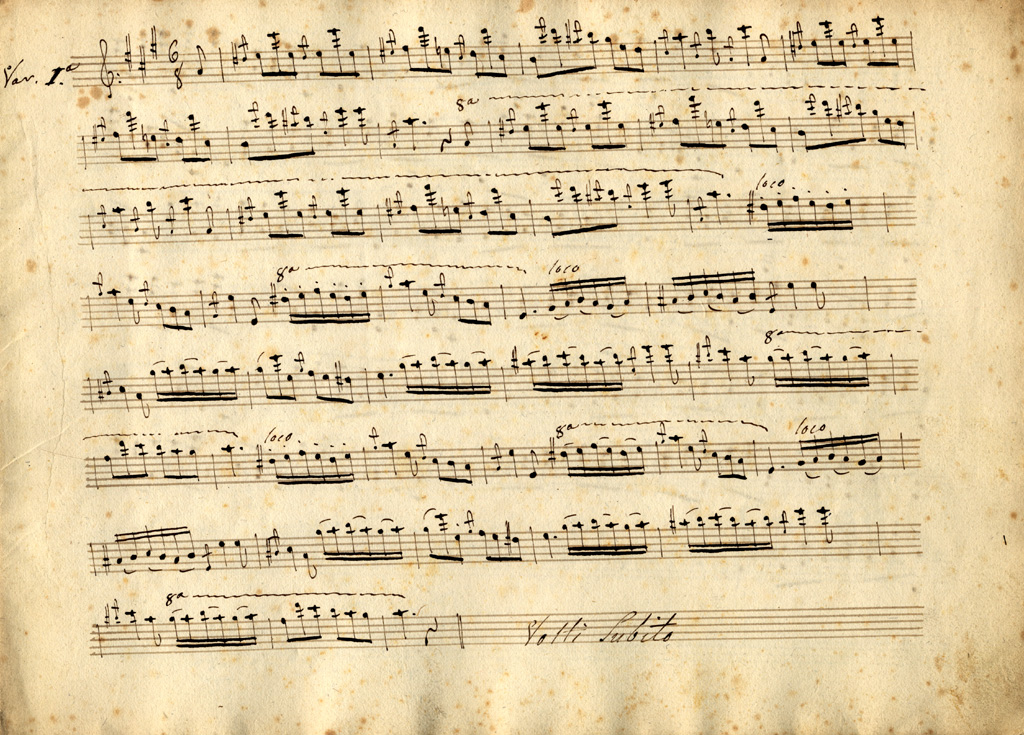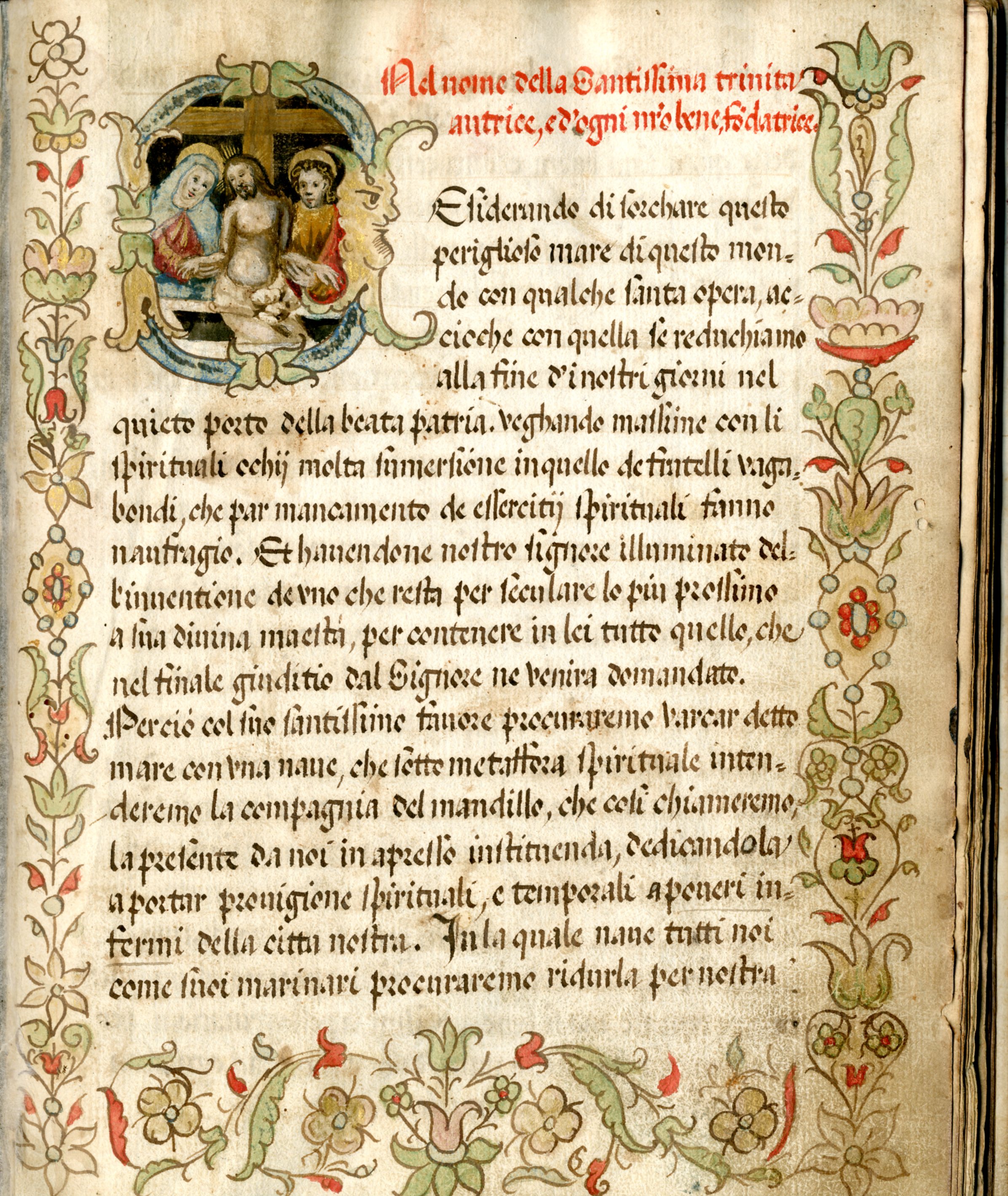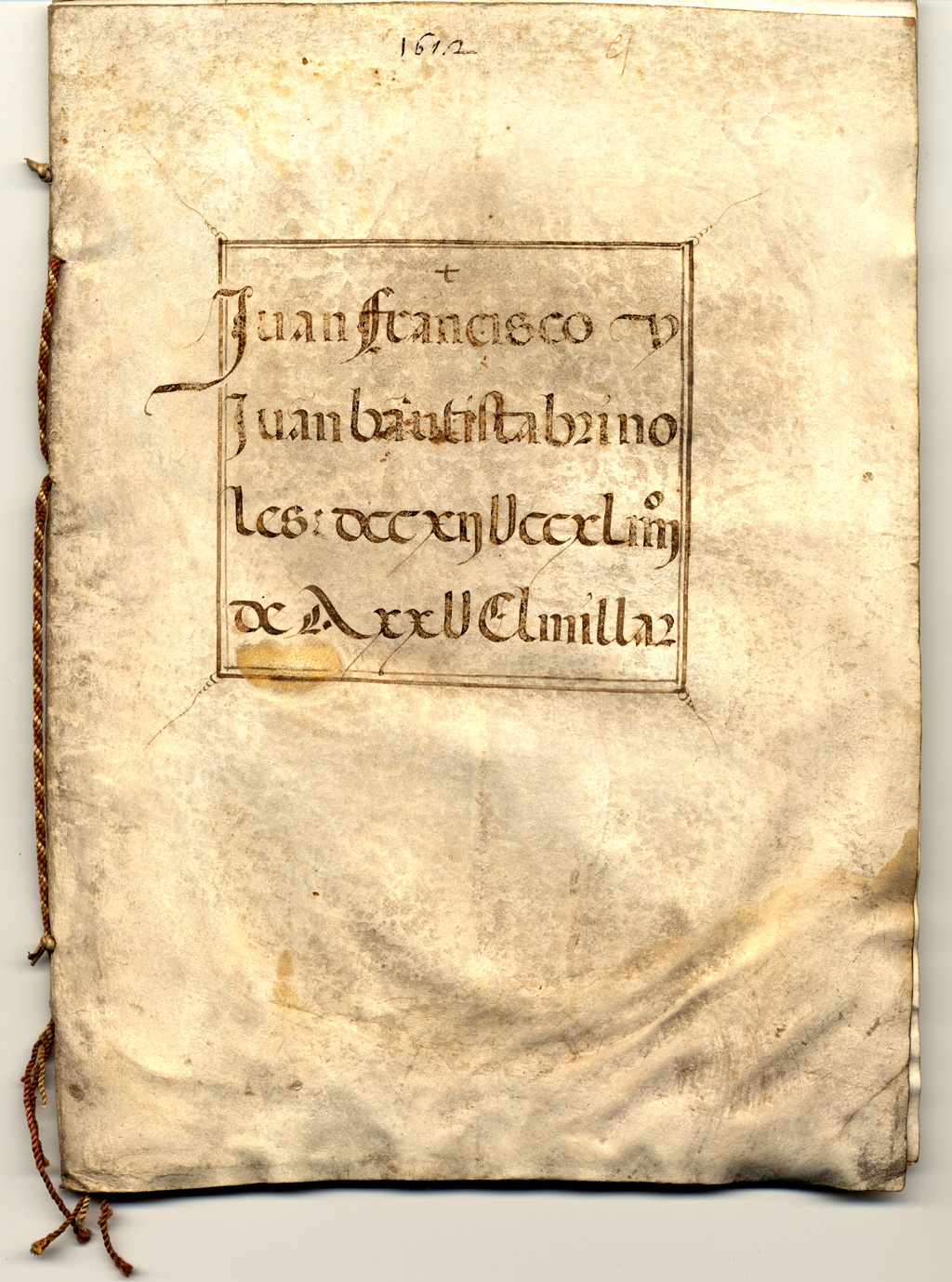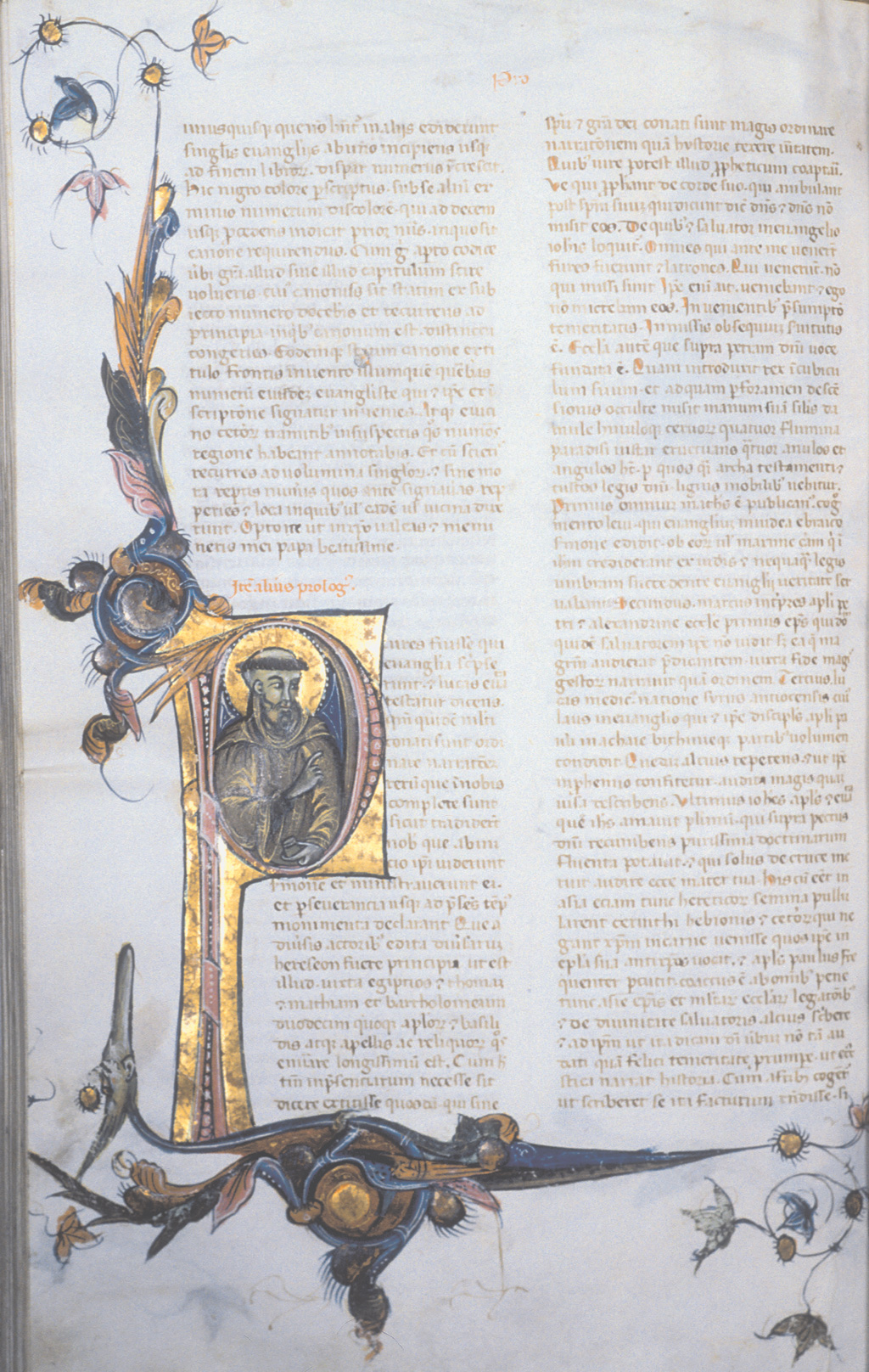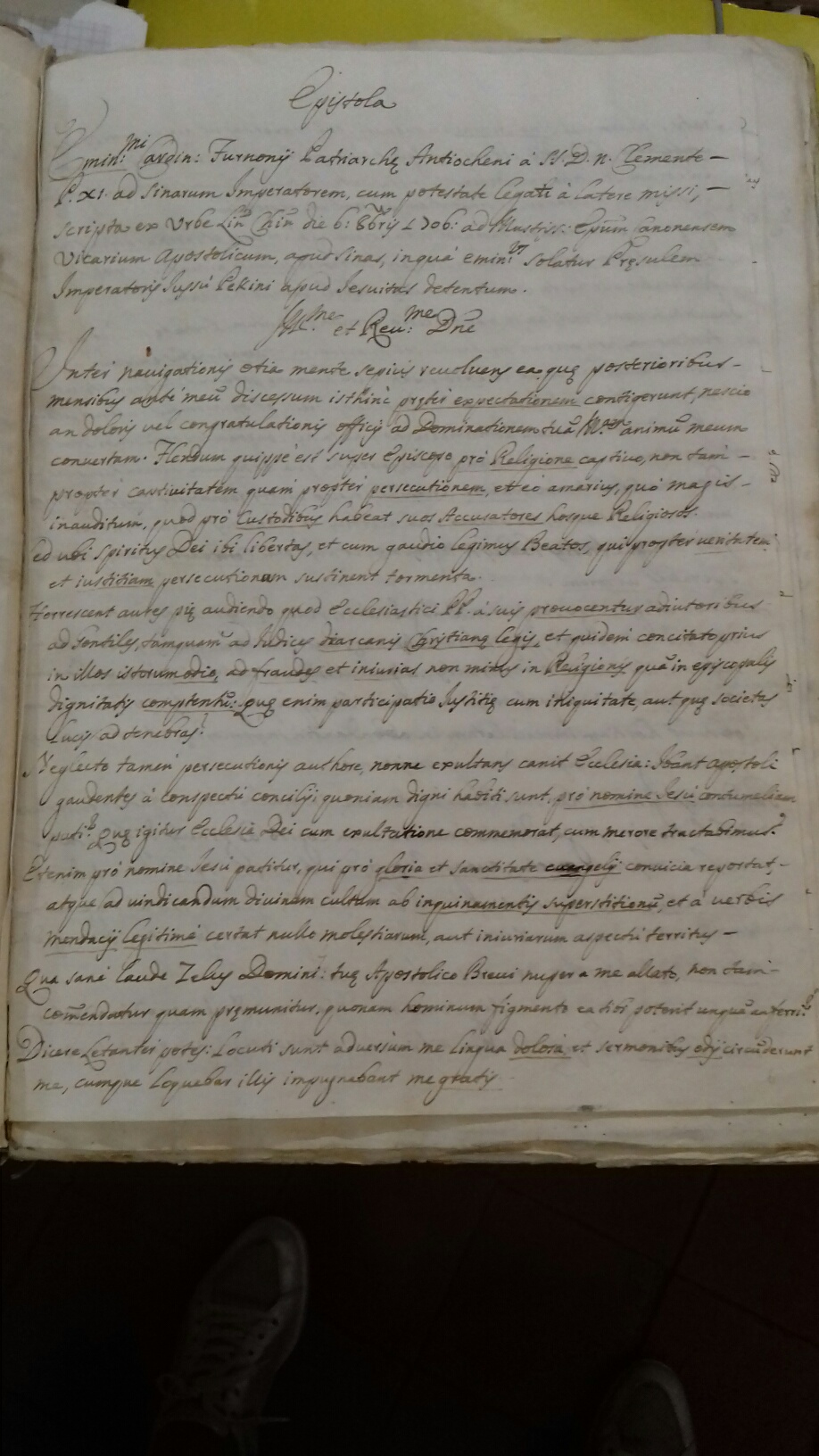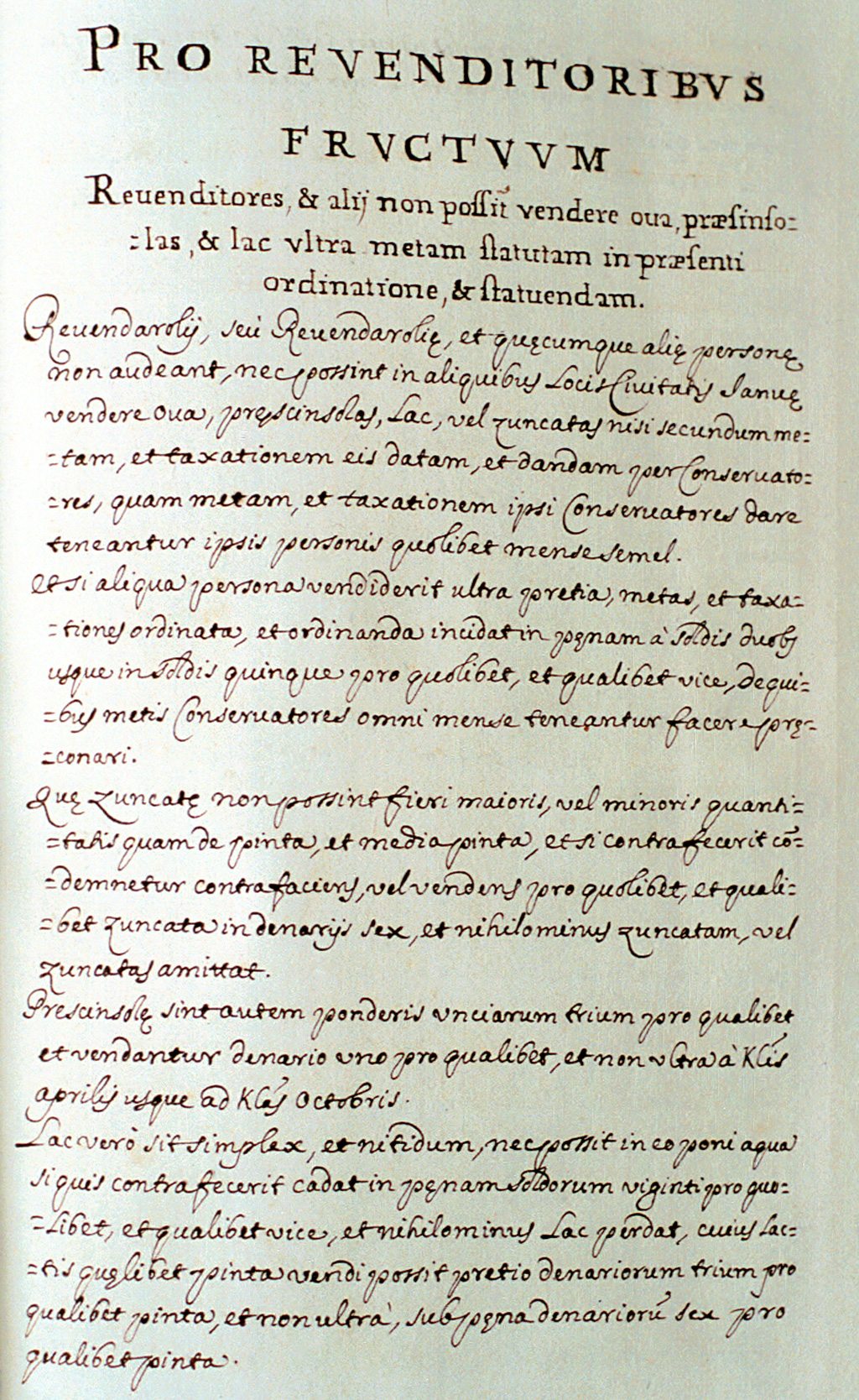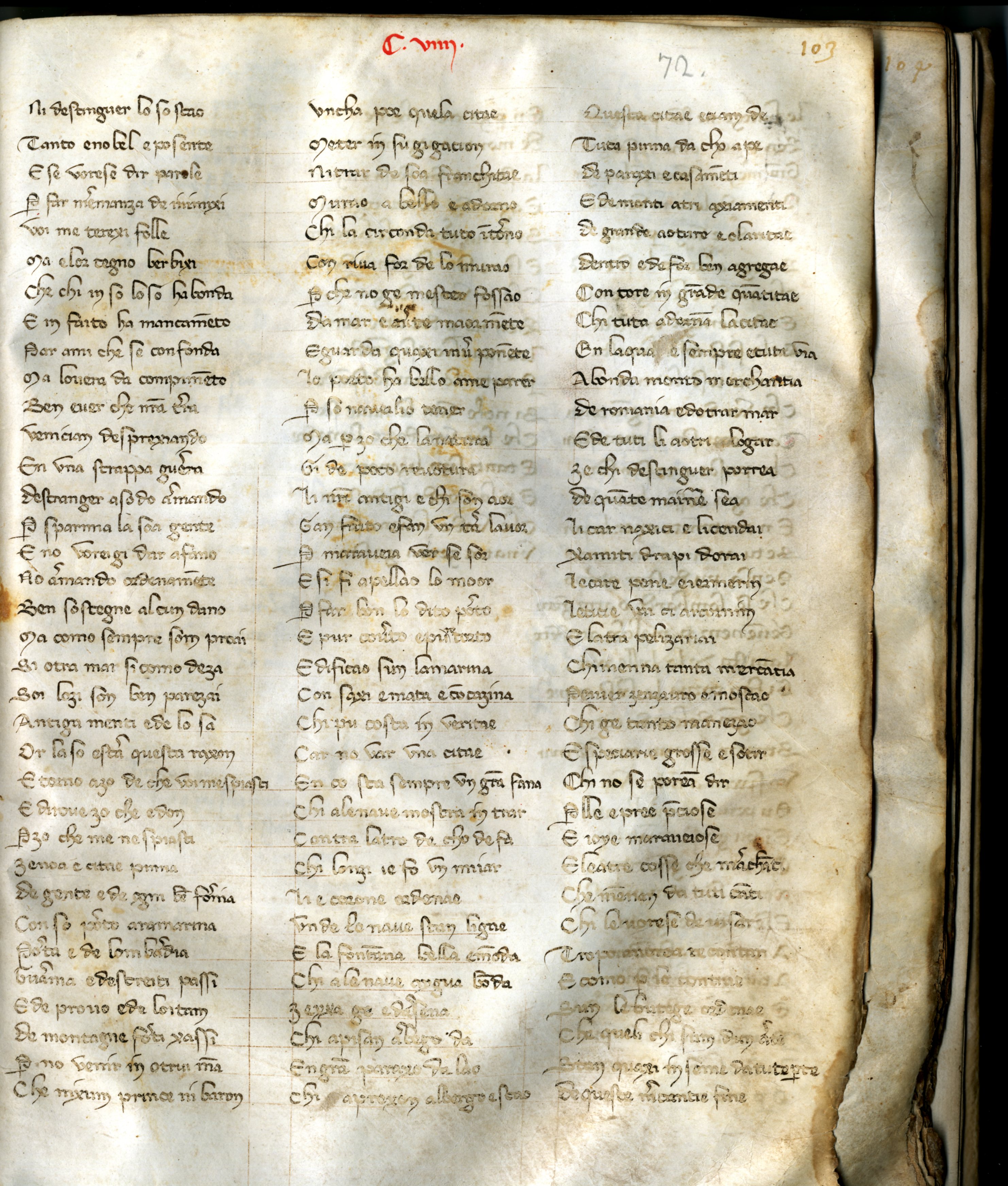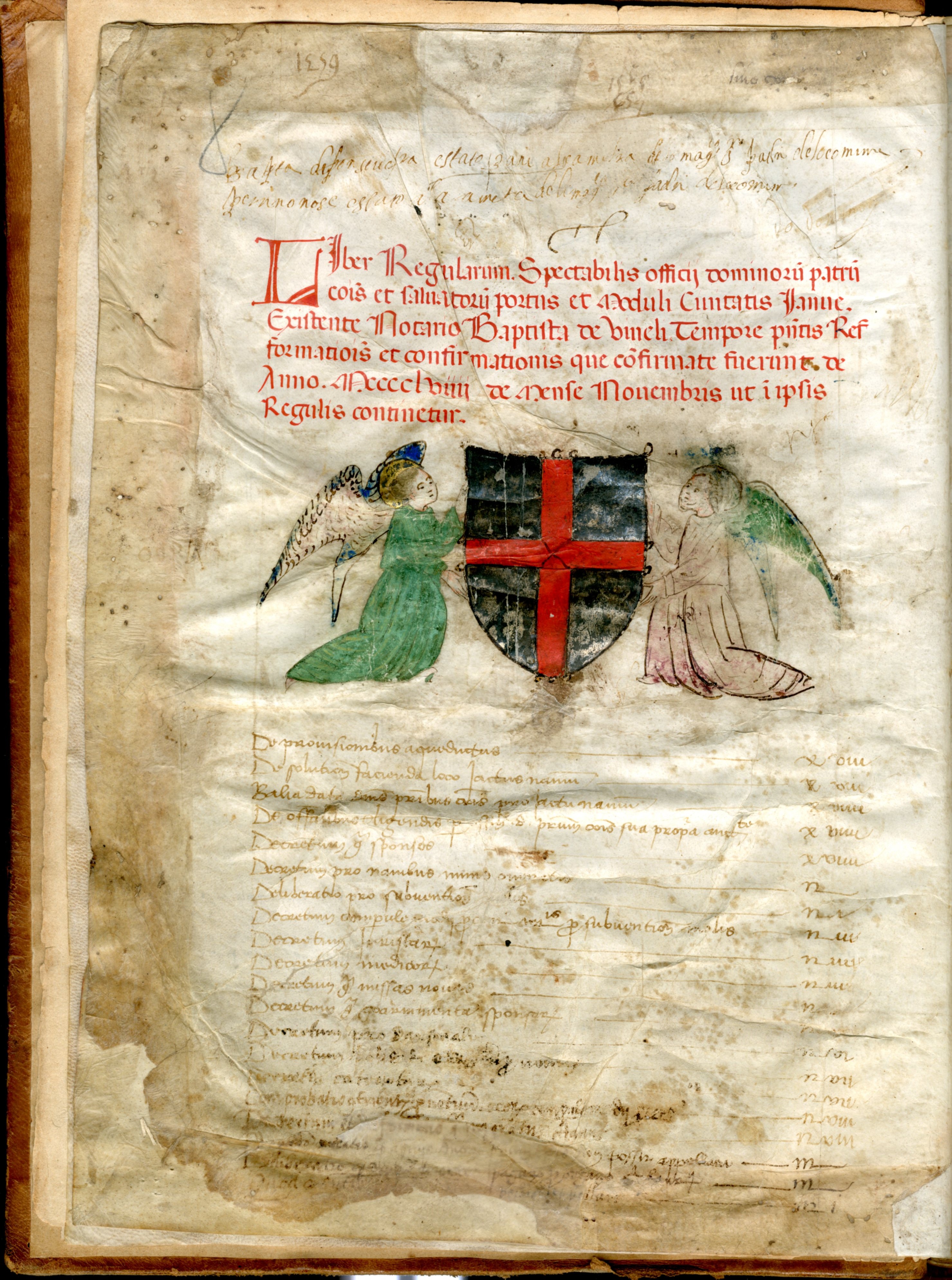Anonymous Genoese
Parchment manuscript, of the XIV century, better known as the Codex Molfino, from the name of its "discoverer" Matteo Molfino - former civic lawyer, decurion and municipal secretary from 1849 to 1854 - who found it 1820 and submitted it to Giovan Battista Spotorno who examined it and spread the news of its discovery.
The passion for antique books over the years led Matteo Molfino to form a rich library, through a series of lucky purchases which enriched an initial small collection of manuscripts belonging to his family, which in 1882 was put up for sale for the not inconsiderable sum of L. 3,500.
On May 10, 1882, the Municipality of Genoa approved the purchase of half of the collection for the sum of L. 1,750.
The code measures 33 x 23 cm and consists of 85 pages; the script is in a Gothic documentary style of the chancellery type, which was adopted for use in books in the composition of less valuable manuscripts and in vernacular texts, a form of writing that was particularly widespread in the Italian peninsula during the fourteenth century.
It contains 147 poems in the vernacular and 35 in Latin, a precious source of information on Genoa at the end of the XIII - early XIV century, ranging from events of the 'great' history (the Genoese victories of Korcula and Lajazzo, the arrival of Charles of Valois in Tuscany, the descent of Arrigo VII in Italy) to the smallest details of personal anecdote.
In the following verses the poet Luchetto, better known as "the anonymous Genoese", author of a Genoese vernacular songbook composed between 1283 and 1311, speaking with a citizen of Brescia celebrates the beauty and opulence of Genoa, "City fervent of an intense and industrious life in its port, on construction sites in the squares and streets".
c.CVIIII [original numbering in pen using roman numerals in red ink]
[…]Zenoa è citae pinna
de gente e de ogni ben fornia;
con so porto a ra marina
porta è de Lombardia.
Guarnia è de streiti passi,
e de provo e de loitam
de montagne forti xassi
per no venir in otrui man,
che nixum prince ni baron
unca poè quela citae
meter in sugigacion
ni trar de soa franchiate.
Murao à bello e adorno
chi la circonda tuto intorno
con riva for de lo murao,
per ché no gìè mester fossao.
Da mar è averta
maormente
e guarda inver’ponente;
lo porto à bello, a me parer,
per so nav(a)ilio tener.[…]
In the poems of the poet Luchetto - better known as "the anonymous Genoese" - there is a continuous oscillation between "high" history, made of great events and the smallest facts and anecdotes, taken as a pretext for reflections of a moralizing tone, which seem to testify to a far from superficial knowledge of the most common religious and edifying texts of the end of the thirteenth century.
In some compositions he demonstrates a certain pride in being Genoese and is pleased to highlight the beauty of his city, the defects and qualities of its inhabitants, praising the magnificence and wasteful generosity of his most illustrious fellow citizens in receiving guests, in sharp contrast to the commonplace stereotype that has established itself over time regarding the proverbial avarice of the Genoese.
Although, in general, the poet seems to want to convey a positive vision of Genoa of his time, victorious not only in the battles which led to the conquest of a dominance on the sea, capable of guaranteeing prosperity and well-being to the whole community, on several occasions through his lyrical he stigmatizes its political divisions and internal struggles, comparing Genoa to a great lady brought low by her sons fighting over a conspicuous legacy.
The descriptions of life on board, both merchant and military ships are highly realistic which encourages the supposition of experiences lived in the first person, seasoned by a measure of misogyny that never lacks in any age and place, but always tempered by irony, as in the case the invitation not to eat chestnuts, in order to avoid embarrassing ailments ...


